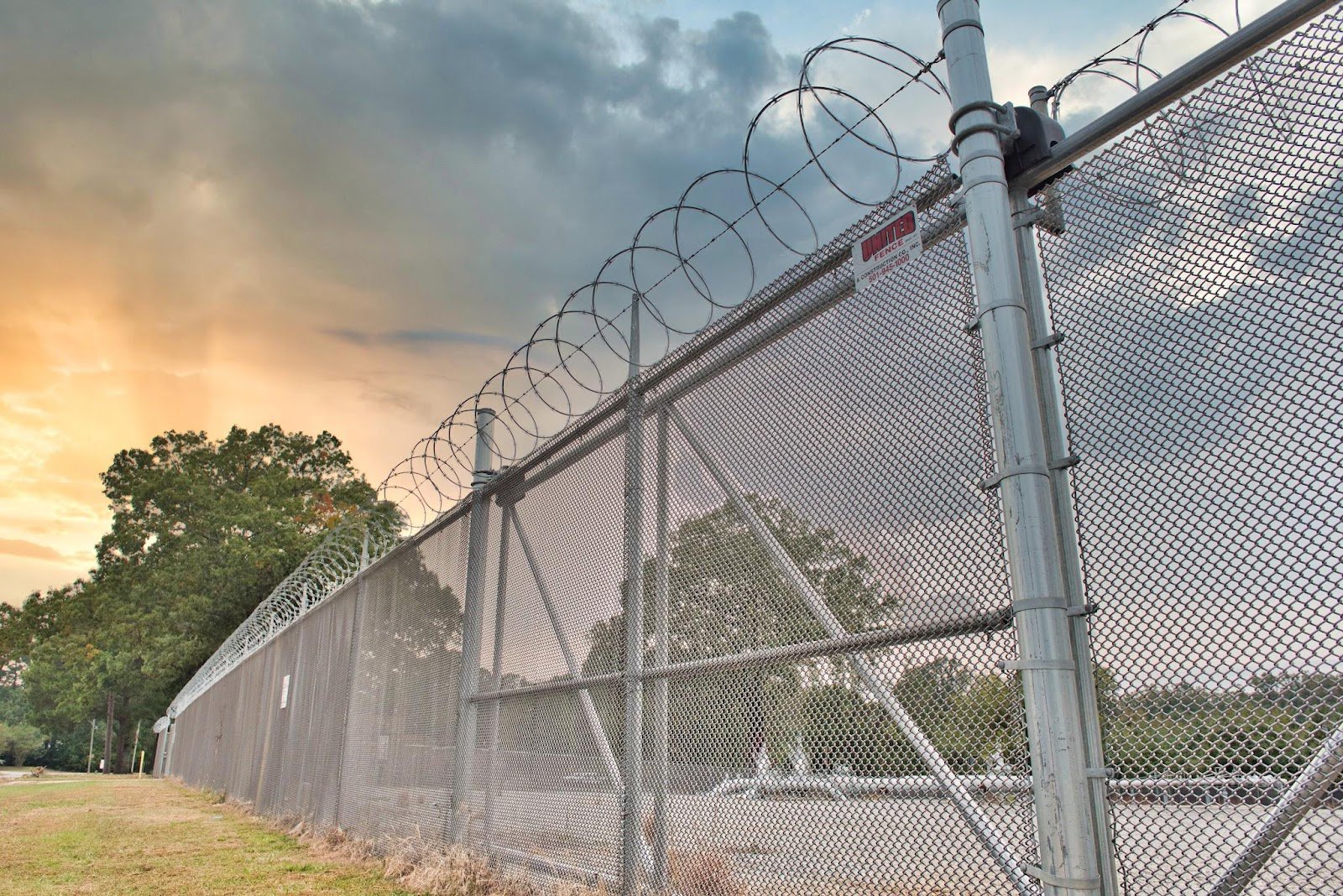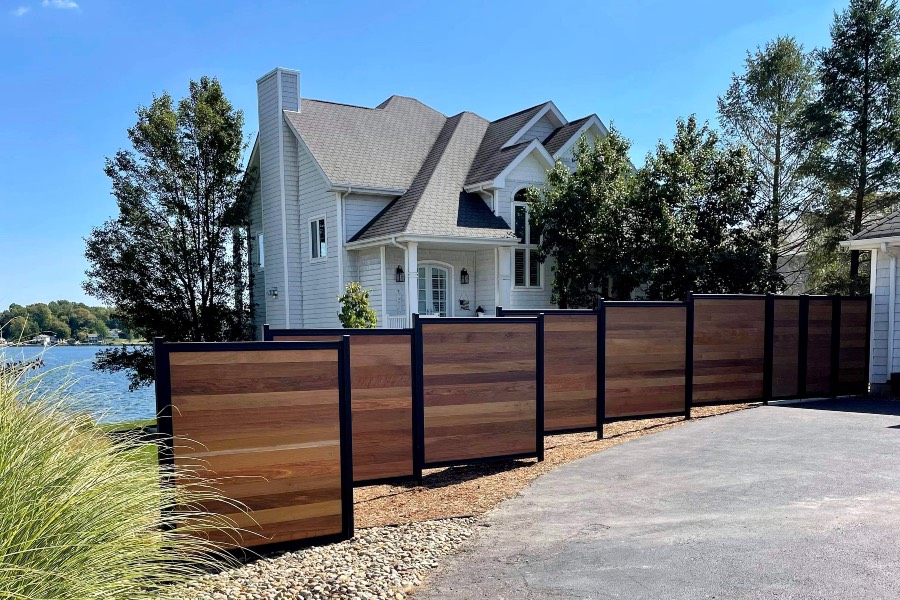All Categories
Featured
When it pertains to preserving a wood fencing, house owners frequently face the choice of whether to tarnish or repaint. Both options have their pros and cons, and the choice eventually relies on your aesthetic choices, the kind of wood, and exactly how much maintenance you agree to commit to. Below's a detailed comparison to aid you make an educated choice.
The Fundamentals of Paint and Staining
Paint entails covering the wood with an opaque layer of shade. It supplies full protection, concealing the wood grain while supplying exceptional security versus environmental aspects.
Discoloring penetrates the wood, boosting its natural appeal while including a safety layer. Depending upon the type, stains can vary from clear to solid, allowing differing levels of timber grain visibility.
Benefits And Drawbacks of Paint
Pros:
Wide Range of Colors: Repaint deals endless color alternatives, permitting you to match your fence to your home's exterior or personal style.
Longer Long-term: High-grade exterior paint can last as much as 5-7 years, requiring much less regular reapplication.
Superior Defense: Paint kinds a thick, strong barrier against moisture, UV rays, and parasites.
Cons:
Cracking and peeling off: In time, paint can split or peel off, particularly in areas with severe climate condition.
Hides Natural Wood Appeal: If you enjoy the all-natural grain of timber, paint may not be the very best option.
Greater Upkeep: Repainting requires scuffing off the old paint, which can be labor-intensive.
![]()
Benefits And Drawbacks of Discoloration
Pros:
All-natural Look: Discolorations protect and enhance the natural beauty of the timber, making it suitable for high-quality hardwood like cedar or redwood.
Much Easier to Reapply: Unlike paint, stains don't break or peel. Reapplying stain generally requires less surface prep work.
Flexible End Up Alternatives: Spots been available in clear, semi-transparent, and strong varieties, offering various levels of protection.
Cons:
![]()
Shorter Lifespan: Stains, particularly clear and semi-transparent ones, may require reapplication every 2-3 years.
Restricted Shade Options: While spots use natural tones, they do not have the wide color palette offered with paint.
Much Less Safety: Discolorations permeate the timber yet do not supply as thick an obstacle as paint, making them slightly much less safety against extreme climate.
Elements to Take Into Consideration
Aesthetic Preferences: If you want vivid shades and total protection, paint is the means to go. For a natural and rustic look, go with discolor.
Wood Type: Premium timbers with stunning grains take advantage of discoloration, while lower-grade woods can be repainted for a refined look.
![]()
Climate: In moist or damp climates, paint's thicker barrier might supply far better security. In moderate or dry climates, spots can suffice.
Upkeep Commitment: Painting involves much less constant reapplication but even more initiative throughout touch-ups. Staining requires regular upkeep however is much easier to handle.
Last Ideas
Both paint and discoloration can properly shield and beautify your wood fencing. The most effective choice depends on your concerns, whether they favor aesthetics, resilience, or convenience of maintenance. By comprehending the benefits and drawbacks of each, you can select the coating that straightens with your needs and guarantees your fencing stays a standout attribute of your residential property for many years to find.
The Fundamentals of Paint and Staining
Paint entails covering the wood with an opaque layer of shade. It supplies full protection, concealing the wood grain while supplying exceptional security versus environmental aspects.
Discoloring penetrates the wood, boosting its natural appeal while including a safety layer. Depending upon the type, stains can vary from clear to solid, allowing differing levels of timber grain visibility.
Benefits And Drawbacks of Paint
Pros:
Wide Range of Colors: Repaint deals endless color alternatives, permitting you to match your fence to your home's exterior or personal style.
Longer Long-term: High-grade exterior paint can last as much as 5-7 years, requiring much less regular reapplication.
Superior Defense: Paint kinds a thick, strong barrier against moisture, UV rays, and parasites.
Cons:
Cracking and peeling off: In time, paint can split or peel off, particularly in areas with severe climate condition.
Hides Natural Wood Appeal: If you enjoy the all-natural grain of timber, paint may not be the very best option.
Greater Upkeep: Repainting requires scuffing off the old paint, which can be labor-intensive.

Benefits And Drawbacks of Discoloration
Pros:
All-natural Look: Discolorations protect and enhance the natural beauty of the timber, making it suitable for high-quality hardwood like cedar or redwood.
Much Easier to Reapply: Unlike paint, stains don't break or peel. Reapplying stain generally requires less surface prep work.
Flexible End Up Alternatives: Spots been available in clear, semi-transparent, and strong varieties, offering various levels of protection.
Cons:

Shorter Lifespan: Stains, particularly clear and semi-transparent ones, may require reapplication every 2-3 years.
Restricted Shade Options: While spots use natural tones, they do not have the wide color palette offered with paint.
Much Less Safety: Discolorations permeate the timber yet do not supply as thick an obstacle as paint, making them slightly much less safety against extreme climate.
Elements to Take Into Consideration
Aesthetic Preferences: If you want vivid shades and total protection, paint is the means to go. For a natural and rustic look, go with discolor.
Wood Type: Premium timbers with stunning grains take advantage of discoloration, while lower-grade woods can be repainted for a refined look.

Climate: In moist or damp climates, paint's thicker barrier might supply far better security. In moderate or dry climates, spots can suffice.
Upkeep Commitment: Painting involves much less constant reapplication but even more initiative throughout touch-ups. Staining requires regular upkeep however is much easier to handle.
Last Ideas
Both paint and discoloration can properly shield and beautify your wood fencing. The most effective choice depends on your concerns, whether they favor aesthetics, resilience, or convenience of maintenance. By comprehending the benefits and drawbacks of each, you can select the coating that straightens with your needs and guarantees your fencing stays a standout attribute of your residential property for many years to find.
Latest Posts
Checking Out the Diverse Secure Fencing Options at Washington Fence
Published Apr 08, 25
1 min read
Revitalize Your Furnishings with Specialist Fixing Services
Published Apr 08, 25
1 min read
Enhancing Your Home with Constant Panel Secure Fencing
Published Apr 08, 25
1 min read